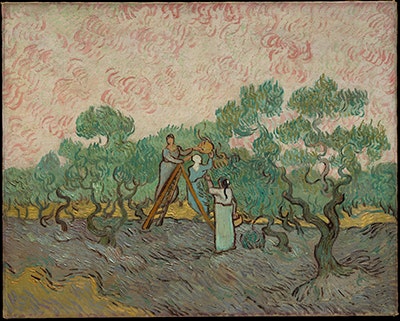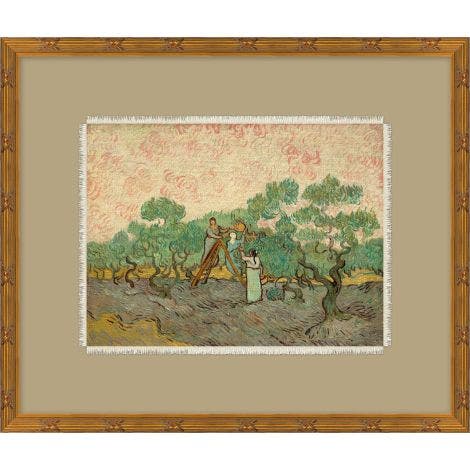Local Storage seems to be disabled in your browser.
For the best experience on our site, be sure to turn on Local Storage in your browser.
Women Picking Olives

Our Inspiration:Women Picking Olives
Vincent van Gogh (Dutch, 1853–1890)
Oil on canvas, 28 5/8 x 36 in., 1889
The Walter H. and Leonore Annenberg Collection,
Gift of Walter H. and Leonore Annenberg, 1995,
Bequest of Walter H. Annenberg, 2002 1995.535
At the end of 1889, Van Gogh painted three versions of this picture. He described the first as a study from nature “more colored with more solemn tones,” and the second as a studio rendition in a “very discreet range” of colors. The present work in The Met collection, the most resolved and stylized of the three, was intended for his sister and mother, to whom Van Gogh wrote: “I hope that the painting of the women in the olive trees will be a little to your taste—I sent [a] drawing of it to Gauguin...and he thought it good...”

Our Inspiration:Women Picking Olives
Vincent van Gogh (Dutch, 1853–1890)
Oil on canvas, 28 5/8 x 36 in., 1889
The Walter H. and Leonore Annenberg Collection,
Gift of Walter H. and Leonore Annenberg, 1995,
Bequest of Walter H. Annenberg, 2002 1995.535
At the end of 1889, Van Gogh painted three versions of this picture. He described the first as a study from nature “more colored with more solemn tones,” and the second as a studio rendition in a “very discreet range” of colors. The present work in The Met collection, the most resolved and stylized of the three, was intended for his sister and mother, to whom Van Gogh wrote: “I hope that the painting of the women in the olive trees will be a little to your taste—I sent [a] drawing of it to Gauguin...and he thought it good...”



